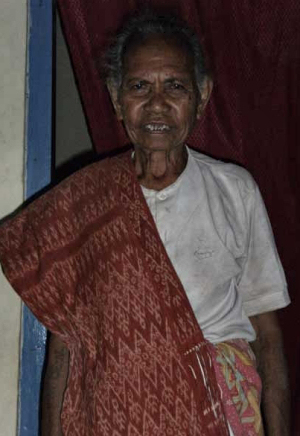Tiny Semau - refuge of the Helong
Semau is quite fertile and has a reputation for its corn, water melons and mangoes. It was also traditionally Kupang's main supplier of fire wood and charcoal - which used to cause problems in Kupang kitchens during the high wind seasons, especially from the end of the year until the Chinese New Year, when the people from Semau did not dare to set their sails. On Timor, especially in the nearby Kupang region, Semau is in ill repute on account of its supposedly common practice of black magic, which makes many Timorese fearful of its inhabitants and reluctant to ever set foot on it. It may well be a case of reversed reversed emotion not uncommon when one group persecutes another. We persecute people, it makes us feel bad, and then we blame the victims for our unhappiness - and accuse them of black magic. Semau suffers from a stark income disparity. There are rich cattle farmers who ship their livestock to Timor, often being boat owners themselves, whereas many others survive on only one meal a day. As on mainland Timor public services such as health care and education are very poor. Malaria, cholera, dengue fever and respiratory diseases are common. There are very few older textiles from Semau in western collections. Those that have been published have much in common with those from a few areas on Timor, particularly Amarasi, but not enough to cause confusion. Man's wraps consist of three panels, the middle of which is white, the outer two (somewhat smaller than the side panels of Amarasi cloths) generally morinda red to rust brown. The women's sarong consists of two identical parts. The two in the Rautenstrauch-Joest Museum both have a pattern that is reminiscent of python skin, with nets of elongated diamonds, again in écru on rust brown. Whereas on Timor men's wraps tend to show a horizontal alignment of the pattern rows, the women's sarongs a vertical alignment, on the ikat textiles from Semau the arrangement is just the reverse. Ikat production on Semau probably stopped by or before 1950. Georges Breguet reports that when Threads of Life wanted to help the women of Semau make a living by reviving their ikat weaving, they could not figure out how to do the characteristic 'clove flower' pompons, as there was not a single old weaver alive who still knew how to make them, so that his piece had to be brought in to show them. |




